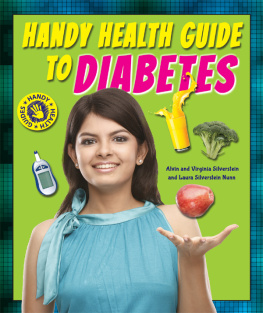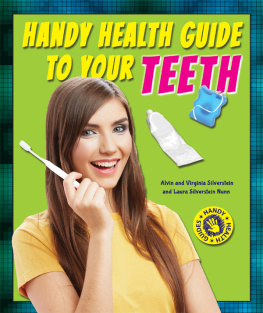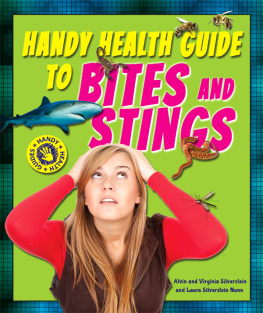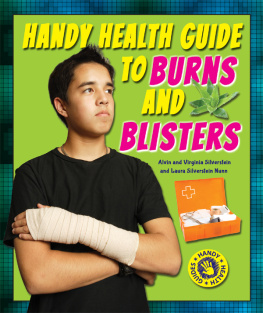THE SUGAR DISEASE
We all face health problems once in a while. Maybe you have come down with the flu or you have diabetes. Perhaps you have asthma or a cavity. Some people need glasses to see better or are allergic to bee stings. These handy guides teach you about your health and how all the parts of your body work together to keep you healthy most of the time.
About the Author
Dr. Alvin Silverstein is a retired professor of biology at the College of Staten Island, City University of New York. Virginia Silverstein translates scientific Russian and is a professional author. Together they have written more than 200 books for young people. Laura Silverstein Nunn has coauthored more than 100 books with her parents.

Image Credit: Comstock Images/ Photos.com
Some people are not able to use the sugar in food properly. They have diabetes.
Most kids love to eat sweets. Ice cream, candy, and cake can make a day special, and a sweet dessert after dinner would be a nice treat. Sweet foods usually contain sugarthats why they taste so good. But eating too many sweets isnt good for anybody. They can rot your teeth and keep you from eating foods that make you healthy and strong.
For some people, foods that contain sugar are not just unhealthythey can be dangerous. Normally, your body turns sugar into energy you can use to do everyday activitiesplay, run, and even think. But some people are not able to use the sugar in their blood properly. They have a condition called diabetes. If you have diabetes, sometimes you might feel tired and confused. You might even faint or have to go to the hospital.

Image Credit: Shutterstock.com
Regular exercise will help keep your body healthy.
There is no cure for diabetes, but there are ways to keep the condition under control. Medications can prevent the symptoms. People often take a drug that must be injected into the skin. Exercising regularly and eating healthy foods are also important. With a good daily routine, a person with diabetes can live a long, healthy life.

Do you have a sweet tooth? If you do, dont worryyou cant get diabetes from eating too many sweets. However, eating too much of that stuff can make you gain weight, which may lead to diabetes.
Diabetes is a disease in which the body cannot use sugar properly, and extra sugar builds up in the blood. Everybody has some sugar in their blood. It supplies the body with energy. But too much sugar in the blood can make you sick.
Normally, much of the food you eat is turned into a sugar called glucose. Some of the glucose is stored, and some of it is used directly for energy. Special chemicals, called hormones, are needed for the body to get the energy from sugar. These hormones are produced in the pancreas, an organ near your stomach.
Scattered throughout the pancreas are small blobs of tissue, called islets. Cells in the islets produce two important hormones, insulin and glucagon. These hormones are produced all the time, but the amounts sent out, or secreted, from the pancreas depend on how much sugar is already in the blood.
Both hormones work to control the bodys use of sugar, but they have opposite effects on the blood. How do insulin and glucagon work?
After you eat, food is digested, or broken down, in your mouth, stomach, and intestines. The digestion process changes starches into sugars. Sugars and other food materials pass into your blood, which carries them to all parts of the body. Now it is time for insulin to go into action.

Image Credit: Shutterstock.com
Food passes from the mouth into the stomach and then on to the intestines to be broken down by digestive juices from the pancreas.
When the amount of glucose in the blood (the blood sugar level) rises, the pancreas secretes insulin. Insulin lowers the blood sugar level by helping glucose pass out of the blood and into the cells of the body. Some of the sugar in the body cells is used right away to produce energy. Some is changed into starch and fats and stored in the body. Starches and fats are handy forms to store sugar until the body needs some extra energy.
When the blood sugar level falls, the pancreas secretes more glucagon. This hormone makes the blood sugar level go up by causing starch in the cells to turn back into glucose. The glucose goes into the blood and is then carried to the cells that need energy.
Insulin and glucagon work together like members of a team. They make sure that the amount of sugar in the blood is always just right.
When the body cannot make enough insulin or cannot use the insulin properly, glucose cannot get into the cells. Eventually, extra sugar builds up in the blood, causing the symptoms of diabetes.

Image Credit: Shutterstock.com
This diagram shows the organs in the digestive system, including the pancreas.

You probably think of sugar as that white stuff you sprinkle over your cereal or see people put in their coffee or tea. But that is only one kind of sugar. Sugars are found in sweet-tasting foods, such as fruits, candy, and ice cream. They belong to a food group called carbohydrates, which are the bodys main source of energy. Another type of carbohydrate is starch. Starch is made up of a lot of sugar units linked together. Starchy foods include breads, pasta, and rice.

Image Credit: 2012 Clipart.com

The pancreas is a double-duty organ. In addition to secreting the hormones insulin and glucagon from its islets, it also makes digestive juices. These juices help break down food so that your body can use it.
There are two main types of diabetes: type 1 and type 2. Both types result in too much sugar in the blood and produce similar symptoms. But there are some very important differences between the two.
Type 1 diabetes used to be called juvenile diabetes because it affects mainly children, teens, and young adults, but it can occur at any age. In type 1 diabetes, the pancreas no longer produces insulin. This can be very dangerous. Type 1 diabetes can appear suddenly. You may feel fine one day and then very sick the next. It is very important to correct the blood sugar level quickly to prevent life-threatening complications.
Type 2 diabetes is the most common formit accounts for about 90 to 95 percent of all diabetes cases. It affects mostly adults over age forty, although children may also develop this type of diabetes. In fact, doctors are seeing type 2 diabetes in an increasing number of young people these days, especially teenagers. In type 2 diabetes, the pancreas does produce insulin. However, it does not produce enough of it, or the body cannot use it properly. As a result, the body cells cannot get energy from sugar. Doctors call this condition insulin resistance. This type of diabetes can take years to develop.




















